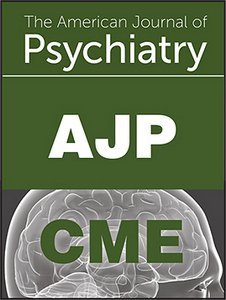美国心理治疗的趋势。
IF 15.1
1区 医学
Q1 PSYCHIATRY
引用次数: 0
摘要
目的调查近年来全国门诊精神卫生保健和心理治疗的趋势。方法分析2018-2021年医疗支出小组调查中四项美国家庭人口代表性调查的服务数据,重点分析门诊心理健康就诊的成年人(N=17,821),包括心理治疗就诊(N=6,415)。作者介绍了年龄、性别和Kessler-6压力调整后的心理健康患者仅接受心理治疗、精神药物治疗或两者联合治疗的百分比趋势。它们描述了接受心理治疗的人每年平均心理治疗次数;提供心理治疗的提供者;心理治疗支出;还有其他特点。结果在接受门诊精神卫生保健的成年人中,仅使用心理治疗的人数增加(2018年和2021年分别为11.5%和15.4%);年龄、性别和痛苦调整差异=2.8%,95% CI=0.6, 5.0),但在心理治疗和精神药物方面差异不大(20.8%和22.5%;调整后差异=1.3%,95% CI=-0.7, 3.4),而仅使用精神药物的人数下降(67.6%和62.1%;调整差=-4.5%,95% CI=-6.9, -2.1)。每位接受心理治疗的患者接受心理治疗的次数有所增加(平均9.8次和11.8次;调整差值=2.1,95% CI=0.6, 3.7)和全国心理治疗总支出(以2021年不变美元计算,308亿美元和510亿美元,趋势,p=0.03),接受精神科医生心理治疗的患者减少(41.2%-34.2%,调整差值=-6.7%,95% CI=-11.0, -2.4)。结论2018 - 2021年,心理治疗在门诊精神卫生保健中发挥了更大的作用,而不使用心理治疗的精神药物虽然是模式治疗,但却越来越少。精神科医生为心理健康门诊病人提供心理治疗的比例正在下降,这可能增加了精神科医生将病人转介给非医师心理治疗师并与之合作的需求。本文章由计算机程序翻译,如有差异,请以英文原文为准。
Psychotherapy Trends in the United States.
OBJECTIVE
The authors investigated recent national trends in outpatient mental health care and psychotherapy.
METHOD
Service data from four representative surveys of the U.S. household population, the 2018-2021 Medical Expenditure Panel Survey, were analyzed focusing on adults with outpatient mental health visits (N=17,821) including psychotherapy visits (N=6,415). The authors present trends in age, sex, and Kessler-6 distress adjusted percentages of mental health patients receiving psychotherapy only, psychotropic medications, or their combination. They describe mean annual number of psychotherapy visits of persons receiving psychotherapy; providers delivering psychotherapy; psychotherapy expenditures; and other characteristics.
RESULTS
Among adults receiving outpatient mental health care, an increase occurred in use of only psychotherapy (11.5% and 15.4% in 2018 and 2021, respectively; age, sex, and distress adjusted difference=2.8%, 95% CI=0.6, 5.0), but not in psychotherapy and psychotropic medication together (20.8% and 22.5%; adjusted difference=1.3%, 95% CI=-0.7, 3.4), while use of only psychotropic medication declined (67.6% and 62.1%; adjusted difference=-4.5%, 95% CI=-6.9, -2.1). Increases occurred in psychotherapy visits per psychotherapy patient (means, 9.8 and 11.8; adjusted difference=2.1, 95% CI=0.6, 3.7) and total national psychotherapy expenditures ($30.8 and $51.0 billion in constant 2021 dollars, trend, p=0.03) with a decrease in patients receiving psychotherapy from psychiatrists (41.2%-34.2%, adjusted difference=-6.7%, 95% CI=-11.0, -2.4).
CONCLUSIONS
Between 2018 and 2021, psychotherapy assumed a larger role in outpatient mental health care while psychotropic medication without psychotherapy, though the modal treatment, became less common. Psychiatrists provided psychotherapy to a decreasing percentage of mental health outpatients, which may have increased the need for psychiatrists to refer patients to and collaborate with non-physician psychotherapists.
求助全文
通过发布文献求助,成功后即可免费获取论文全文。
去求助
来源期刊

American Journal of Psychiatry
医学-精神病学
CiteScore
22.30
自引率
2.80%
发文量
157
审稿时长
4-8 weeks
期刊介绍:
The American Journal of Psychiatry, dedicated to keeping psychiatry vibrant and relevant, publishes the latest advances in the diagnosis and treatment of mental illness. The journal covers the full spectrum of issues related to mental health diagnoses and treatment, presenting original articles on new developments in diagnosis, treatment, neuroscience, and patient populations.
 求助内容:
求助内容: 应助结果提醒方式:
应助结果提醒方式:


